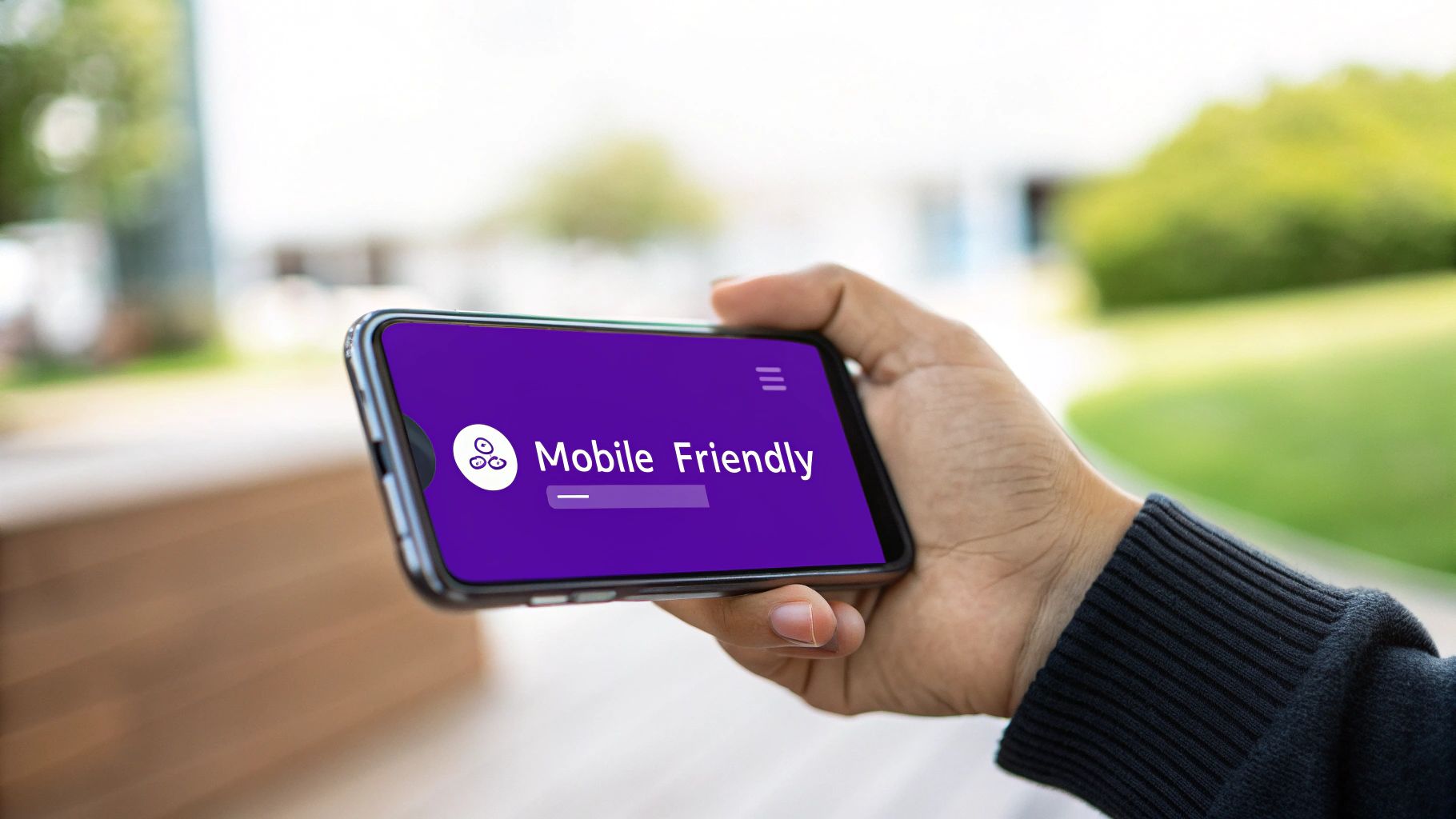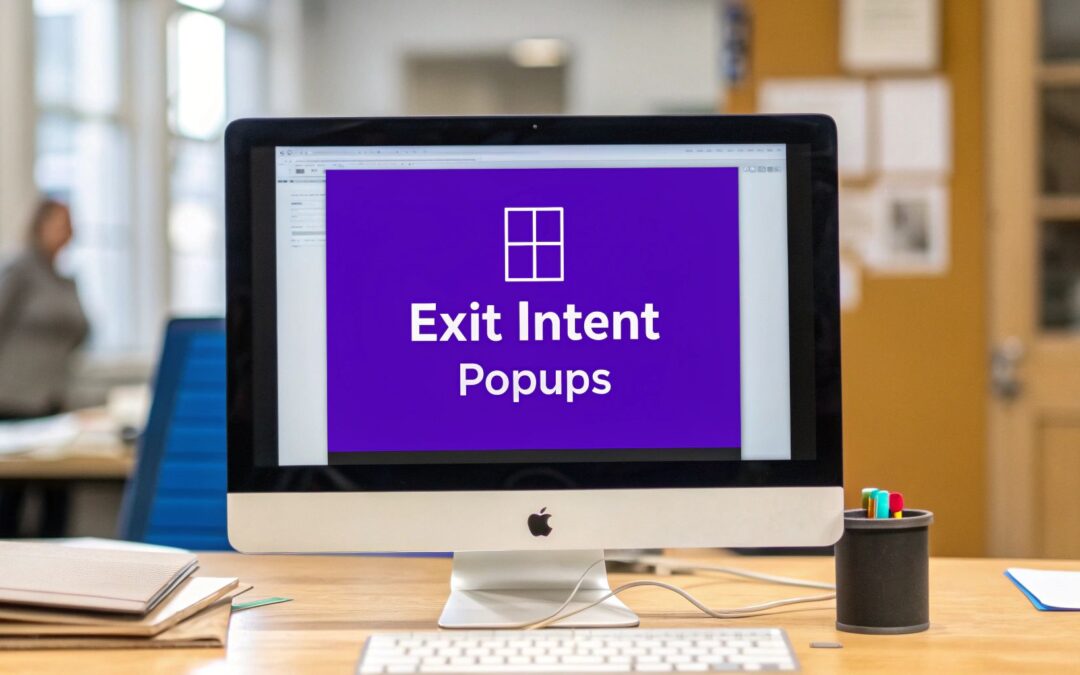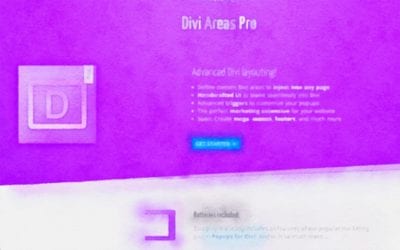When a visitor heads for the exit button, it's not the end of the conversation. It's your last, best chance to make a connection. The exit-intent popup is a powerful tool in your conversion toolkit, capable of recovering abandoning visitors, growing your email list, and reducing cart abandonment. However, a poorly executed popup can do more harm than good, annoying users and damaging your brand's reputation. The difference between a high-converting asset and a user-experience liability lies in the details.
This article cuts straight to what works. We will explore seven actionable exit intent popup best practices you can implement immediately using Divi and Divi Areas Pro. Forget generic advice; we're diving deep into specific strategies that deliver real results. You will learn precise techniques for:
- Optimizing triggers for maximum impact.
- Crafting offers that are impossible to ignore.
- Designing for a seamless mobile experience.
- Using A/B testing to refine your approach.
- Leveraging personalization for a one-to-one feel.
By mastering these techniques, you can transform your exit-intent popups from a simple interruption into a strategic, revenue-generating final touchpoint. Let's get started.
1. Master Timing and Trigger Optimization
The single most critical factor in a successful exit-intent campaign isn't the offer or the design; it's the timing. An ill-timed popup feels intrusive and aggressive, while a perfectly timed one feels helpful and relevant. This is where mastering exit intent popup best practices truly begins. The goal is to interrupt the user’s departure, not their browsing experience.
Exit-intent technology tracks a user's mouse velocity and direction. When the cursor moves rapidly towards the top of the browser window (to close the tab or type a new URL), the trigger fires. However, a "one-size-fits-all" approach is a recipe for high bounce rates. Instead, you need to configure your triggers based on user behavior and page context.
How to Implement Smart Timing with Divi Areas Pro
Divi Areas Pro gives you granular control over these triggers. Instead of using the default exit-intent setting on every page, consider a more strategic approach.
- On-Leave (Standard Exit-Intent): This is your classic trigger. Use it on high-stakes pages like your cart or checkout page. When a user is about to abandon a full cart, a last-minute offer can be incredibly effective.
- On-Inactivity: This trigger is perfect for content-heavy pages like blog posts or complex service pages. If a user has been idle for 60-90 seconds, they might be disengaged or confused. A popup offering a related guide, a video tutorial, or an invitation to a webinar can re-engage them.
- On-Scroll-Up: A user scrolling back up a long sales page often indicates they are looking for something they missed, like pricing or a specific feature. Triggering a popup at this moment that highlights a key benefit or offers a direct link to the pricing table can be a powerful conversion aid.
Pro Tip: Combine triggers for maximum impact. For example, you can set a rule in Divi Areas Pro to show a popup only to users who have scrolled 75% down a page and then display exit intent. This targets your most engaged visitors, making your offer feel exclusive and well-earned rather than random. This level of trigger optimization separates mediocre popups from high-converting ones.
2. Compelling Value Proposition Design
Even the most perfectly timed popup will fail if its message doesn't resonate. Once you've captured the user's fleeting attention, you have a split second to present an offer so valuable it stops them in their tracks. This is where compelling value proposition design becomes a cornerstone of exit intent popup best practices. Your offer must directly address a user's need, desire, or hesitation, providing an immediate and clear reason to reconsider leaving.
A generic "Sign up for our newsletter" is easily dismissed. However, an offer like "Get 15% off your first order now" or "Download the free checklist to avoid these 5 common mistakes" provides instant, tangible value. The key is to move from a vague request to a specific, beneficial exchange that aligns with the user's original intent for visiting your site.

How to Craft a High-Converting Offer
Creating a compelling offer is both an art and a science. It requires understanding your audience's pain points and motivations. Your goal is to make the user feel like they are getting an exclusive deal that solves a problem for them right now.
- Be Hyper-Specific: Vague offers get ignored. Instead of "Get a discount," use "Save 20% on your cart instantly." Instead of "Free guide," use "Download our 10-point SEO checklist for Divi." Specificity builds trust and clarifies the value.
- Address Objections Head-On: Why is the user leaving? Is the price too high? Are they unsure if the product will work for them? Use your popup to counter these thoughts. An offer like Casper’s famous 100-night trial directly addresses the objection of buying a mattress without trying it.
- Create Urgency or Scarcity: Phrases like "Offer expires in 15 minutes" or "Only 5 left at this price" can motivate immediate action. Divi Areas Pro can even integrate with timer plugins to make this countdown dynamic and more believable. This is a critical tactic for boosting your site’s ability to generate leads. You can discover more about lead generation optimization.
Pro Tip: Frame your offer in terms of what the user gains, not what you want them to do. Instead of "Submit your email," use a button that says "Get My Free Guide." This benefit-oriented language, known as the call-to-value, shifts the focus to the user's reward and can dramatically increase conversion rates.
3. Mobile-First Responsive Design
An exit-intent popup that shines on desktop can completely fail on mobile. With more than half of all web traffic coming from mobile devices, a non-responsive design isn't just an oversight; it's a significant drain on potential conversions. The core challenge is that traditional mouse-based exit-intent doesn't exist on touchscreens. This forces a shift in strategy, making mobile-first responsive design one of the most crucial exit intent popup best practices.

This approach means designing your popup for the smallest screen first and then scaling up. On mobile, this requires rethinking the entire user interaction. Instead of detecting a cursor leaving the viewport, you must rely on alternative behavioral signals to identify a user's intent to leave. For instance, a user quickly scrolling up a page or hitting the browser's back button are strong indicators of departure on mobile devices.
How to Implement Mobile-First Design with Divi Areas Pro
Divi Areas Pro provides the necessary tools to create popups that are not only responsive but also use mobile-specific triggers effectively. This ensures a seamless experience rather than a disruptive one.
- Use Scroll-Based Triggers: Since classic exit-intent is unreliable on mobile, use triggers like On-Scroll-Up or On-Scroll-To. When a user scrolls to the very bottom of a product page and hesitates, a popup offering a discount is timely. If they quickly scroll back to the top, it signals they might be lost or preparing to leave.
- Keep Forms Minimal: Mobile users have little patience for long forms. If you need to capture information, ask for the absolute minimum, typically just an email address. Any more than that will cause a massive drop-off.
- Ensure Thumb-Friendly Tap Targets: Buttons, form fields, and close icons (X) must be large enough to be easily tapped with a thumb without accidentally hitting something else. Small, hard-to-tap elements are a primary source of user frustration.
- Leverage the Back-Button Trigger: Divi Areas Pro can trigger a popup when a user hits their browser's back button. This is the closest equivalent to desktop exit-intent on mobile and is incredibly powerful for presenting a last-chance offer before a user navigates away.
Pro Tip: Use Divi’s built-in responsive controls to create two distinct versions of your Area within the same section. Hide one on desktop/tablet and the other on mobile. This allows you to tailor not just the design (e.g., a vertical layout for mobile, horizontal for desktop) but also the trigger itself for each device category, ensuring optimal performance across the board. For a deeper dive, review these key tips for better Divi mobile responsiveness.
4. A/B Testing and Conversion Optimization
Launching an exit-intent popup is only the beginning; true mastery comes from a relentless commitment to testing and optimization. Guesswork has no place in a high-stakes conversion strategy. A/B testing, or split testing, is the data-driven process of comparing two versions of your popup to see which one performs better. This methodical approach is a cornerstone of effective exit intent popup best practices.
The principle is simple: you show one version (the control) to 50% of your visitors and a second version (the variation) with a single changed element to the other 50%. By tracking which version achieves a higher conversion rate, you can systematically improve every aspect of your popup, from the headline to the call-to-action (CTA) button color. Without this process, you are simply leaving money on the table.
How to Implement A/B Testing with Divi Areas Pro
Divi Areas Pro doesn’t have a built-in A/B testing feature, but it integrates seamlessly with Google Optimize or other third-party testing tools. You can create two separate, nearly identical Divi Areas (Area A and Area B), changing only one variable in Area B. Then, use your testing tool to display each version to a segment of your audience.
- Test Your Offer: Is a 15% discount more effective than free shipping? Does a free downloadable guide convert better than a webinar invitation? Test the core value proposition to find what truly resonates with your audience.
- Test Your Headline and Copy: Try a question-based headline (“Leaving so soon?”) versus a benefit-driven one (“Get 10% Off Your First Order”). Small changes in wording can have a dramatic impact on user psychology and action.
- Test Your Design and CTA: Experiment with different button colors, images, and layouts. Test a direct CTA like “Claim My Discount” against a softer one like “Learn More” to see what drives more clicks.
Pro Tip: To effectively measure the success of your A/B tests and optimize your exit-intent popups, it's essential to have accurate conversion tracking in place. Run each test long enough to achieve statistical significance, typically at least a week or until you have several hundred conversions. Document every result to build a library of insights specific to your audience, turning each test into a valuable lesson.
5. Personalization and Behavioral Targeting
A generic popup is a missed opportunity. The most effective exit intent popups feel less like an interruption and more like a personal conversation. This is where personalization and behavioral targeting come in, transforming a one-size-fits-all message into a highly relevant offer. This approach involves dynamically changing the popup's content, offer, and even design based on who the user is and how they've interacted with your site.
This strategy goes beyond simply saying "Don't go!". It leverages data to deliver a tailored experience. By analyzing traffic sources, pages visited, or cart contents, you can present a message that resonates on a deeper level. Imagine a user who arrived from a Facebook ad for women's running shoes; showing them a popup with a 10% discount on those exact shoes is infinitely more powerful than a generic newsletter signup form. This is one of the most advanced exit intent popup best practices.
How to Implement Personalization with Divi Areas Pro
Divi Areas Pro excels at this through its powerful Display Conditions. You can create different popups for different user segments and define precisely when each one should appear.
- Target by Traffic Source: Did the user come from a specific Google Ad campaign or an affiliate link? Use the "Referer URL" condition in Divi Areas Pro to show a popup that mirrors the language and offer from that source, creating a seamless experience.
- Target by Pages Visited: If a visitor has viewed multiple product pages within your "Men's Watches" category, you can trigger a specific exit-intent popup offering a guide to choosing the right watch or a special discount on that category. This shows you understand their interests.
- Target by User Role: For membership or e-commerce sites, you can show different popups to logged-in users versus guests. A logged-in customer might see an exclusive offer for their next purchase, while a guest sees an incentive to create an account.
Pro Tip: Start with simple segmentation. You don't need complex data science to begin. A great starting point in Divi Areas Pro is to create two versions of your main exit-intent popup: one for new visitors (using the "Visitor Status: First Time" condition) and another for returning visitors. Offer new users a welcome discount, and returning users an exclusive "welcome back" deal. This simple act of acknowledgment can significantly boost conversions.
6. Non-Intrusive User Experience Design
An exit intent popup is, by its nature, an interruption. The difference between a welcome interruption and an annoying one lies entirely in the design and user experience (UX). Effective exit intent popup best practices demand that we prioritize the user’s experience, creating an overlay that feels helpful and respectful rather than aggressive and desperate. The goal is to capture attention without alienating the user.
A non-intrusive design respects the user's journey. It doesn't scream for attention with clashing colors or hijack the entire screen. Instead, it complements the existing site design, uses clear and concise language, and makes the action (and the dismissal) effortlessly simple. This approach builds trust, showing visitors you value their experience even as they are about to leave.
How to Design for a Better User Experience with Divi Areas Pro
Divi Areas Pro provides the flexibility to move beyond generic, disruptive popups and build experiences that feel integrated and considerate.
- Subtle Overlays: Instead of a jarring, full-screen takeover, use a semi-transparent overlay. In the Divi Area settings, you can adjust the background color and opacity of the modal overlay. A slight darkening of the background page keeps the focus on the popup without completely obscuring the user's context.
- Prominent Close Buttons: The fastest way to frustrate a user is to hide the "close" button. Ensure your close icon (the 'X') is large, has good color contrast, and is located in a conventional spot like the top-right corner. You can also enable the "Close On ESC Key" and "Close On Overlay Click" options in Divi Areas Pro for an even smoother dismissal experience.
- Frequency Capping: Never show the same exit popup to a visitor on every single page visit. This is the hallmark of a spammy experience. Use Divi Areas Pro's powerful "Limits" to set display frequency. For example, you can limit a specific popup to show only once per user session or once every 7 days. This respects the user's initial "no" and keeps your site from feeling repetitive.
Pro Tip: Your popup's design and load time are part of the user experience. A visually heavy popup on a slow site can be disastrous. A crucial element of a positive user experience is site speed; even the best-designed popups won't convert if your site loads slowly. Learn more about effective WordPress speed optimization to ensure your popups appear instantly and seamlessly.
7. Social Proof and Trust Signal Integration
A compelling offer and beautiful design can fall flat if the user doesn't trust your brand. When a visitor is about to leave, they are in a state of skepticism. Integrating social proof and trust signals directly into your exit-intent popup is a powerful psychological tactic to overcome this final hurdle, leveraging the "wisdom of the crowd" to reassure the user and validate their decision to stay.
This practice involves embedding elements that demonstrate credibility and widespread adoption, such as customer testimonials, review star ratings, or security badges. Seeing that others have had a positive experience reduces perceived risk and increases the user's confidence in your offer. It's one of the most effective exit intent popup best practices for turning a hesitant "no" into a confident "yes."
How to Implement Trust Signals with Divi Areas Pro
With Divi Areas Pro, you can use the Divi Builder to seamlessly design these elements into your popups. This allows you to go far beyond a simple text-based offer and build a miniature credibility-boosting machine.
- Showcase Testimonials: Use the Divi Testimonial Module within your Area. Don't just include a generic quote; add the customer's name, role, and a real photo if possible. A short, impactful quote like, "This plugin saved me 10 hours a week!" is far more effective than a vague paragraph.
- Display Dynamic Numbers: For e-commerce stores, showcase how many people have purchased a specific product in the last 24 hours. For SaaS or membership sites, display your total number of active users or subscribers. Seeing that "57 people bought this in the last day" creates urgency and validates the product's popularity.
- Integrate Security Badges: On popups that ask for an email or other personal information, including trust seals is non-negotiable. Add small images of security logos like Norton Secured, McAfee Secure, or BBB Accredited. For e-commerce checkouts, Visa, Mastercard, and PayPal logos build instant payment confidence.
Pro Tip: Go beyond logos and quotes by showing recent activity. Use a third-party tool integration or a custom solution to display a small feed inside your popup, like "John from New York just signed up!" This dynamic proof makes your site feel alive and bustling with activity, creating a powerful Fear Of Missing Out (FOMO) effect that encourages immediate action. Beyond showcasing social proof, further explore proven strategies for building customer trust to strengthen your overall brand appeal and enhance the effectiveness of your popups.
7 Best Practices Comparison Matrix
| Item | Implementation Complexity 🔄 | Resource Requirements ⚡ | Expected Outcomes 📊 | Ideal Use Cases 💡 | Key Advantages ⭐ |
|---|---|---|---|---|---|
| Timing and Trigger Optimization | High – sophisticated detection algorithms | Moderate – needs testing & calibration | Higher conversion rates, better targeting accuracy | When precise exit intent identification is critical | Reduces false triggers, improves UX |
| Compelling Value Proposition Design | Medium – requires deep customer insight | Low to Medium – creative effort | Increased conversions, reduced bounce rates | Sites focusing on clear offers and immediate value | Higher perceived value, better ROI |
| Mobile-First Responsive Design | High – complex mobile-specific dev | Medium – device testing & optimization | Higher mobile conversions, consistent experience | Mobile-heavy traffic, improving mobile UX | Touch-friendly, reaches majority mobile users |
| A/B Testing and Conversion Optimization | High – ongoing experiments and analysis | High – significant traffic & analytics | Data-driven improvements, higher ROI | Continuous optimization of popup elements | Reduces guesswork, continuous improvement |
| Personalization and Behavioral Targeting | High – data integration & segmentation | High – data management & privacy compliance | Higher relevance and conversion rates | Targeted campaigns based on user segments and behavior | Improved user experience, increased lifetime value |
| Non-Intrusive User Experience Design | Medium – balanced design & frequency control | Low to Medium – design and UX effort | Maintains trust, reduces complaints | Brands prioritizing user trust and subtle engagement | Better brand perception, lower bounce rates |
| Social Proof and Trust Signal Integration | Medium – requires authentic content updates | Low to Medium – curation of social/ trust elements | Increased trust and conversions | Building credibility and reducing user hesitation | Builds credibility, leverages psychological triggers |
Transform Your Exits into Opportunities
Navigating the landscape of exit intent popups can feel like walking a tightrope. On one side, you have the immense potential for lead capture, cart recovery, and enhanced user engagement. On the other, the risk of annoying visitors and damaging your brand's reputation looms large. The detailed strategies we've explored in this guide are your balancing pole, providing the stability and precision needed to turn potential exits into powerful conversion opportunities.
Mastering these exit intent popup best practices is not about finding a single magic bullet. Instead, it's about building a sophisticated, user-centric system. It begins with perfecting your timing and triggers, ensuring your message appears at the exact moment of hesitation, not a second too soon or too late. This technical precision must be paired with a compelling value proposition; your offer must be so relevant and valuable that it genuinely stops users in their tracks and makes them reconsider leaving.
From Annoyance to Asset: Key Takeaways
To truly transform your exit-intent strategy, it's crucial to synthesize these best practices into a cohesive approach. Here are the core principles to remember:
- User Experience is Paramount: A non-intrusive, mobile-first design isn’t a luxury, it's a necessity. Your popup must feel like a helpful, integrated part of the user journey, not a disruptive roadblock. Remember to make the 'close' button easy to find and use.
- Data-Driven Decisions Win: Assumptions are the enemy of conversion. Consistent A/B testing of every element, from headlines and offers to button colors and imagery, is the only way to truly understand what resonates with your specific audience.
- Personalization Drives Connection: Generic messages get generic results. Leverage behavioral targeting and personalization to create a one-to-one conversation. Address users by name, reference the specific products in their cart, or tailor offers based on their browsing history to make your popup feel uniquely relevant.
- Trust is Your Conversion Currency: In a digital world filled with skepticism, social proof and trust signals are non-negotiable. Displaying testimonials, star ratings, or security badges within your popup can significantly lower visitor apprehension and increase the likelihood of conversion.
Ultimately, a well-executed exit intent popup is a reflection of your brand’s commitment to its customers. It shows that you understand their needs, respect their time, and are willing to provide genuine value to keep them engaged. By moving beyond generic tactics and embracing these nuanced, data-backed strategies, you can effectively implement exit intent popup best practices that not only capture leads but also build lasting customer relationships.
Ready to put these advanced strategies into action with unparalleled ease and flexibility? The premium Divi modules from Divimode, including powerful solutions for creating dynamic and targeted popups, provide the tools you need to build what you've learned today. Elevate your Divi projects by visiting Divimode and discover how to transform your website's exit points into your strongest conversion assets.






